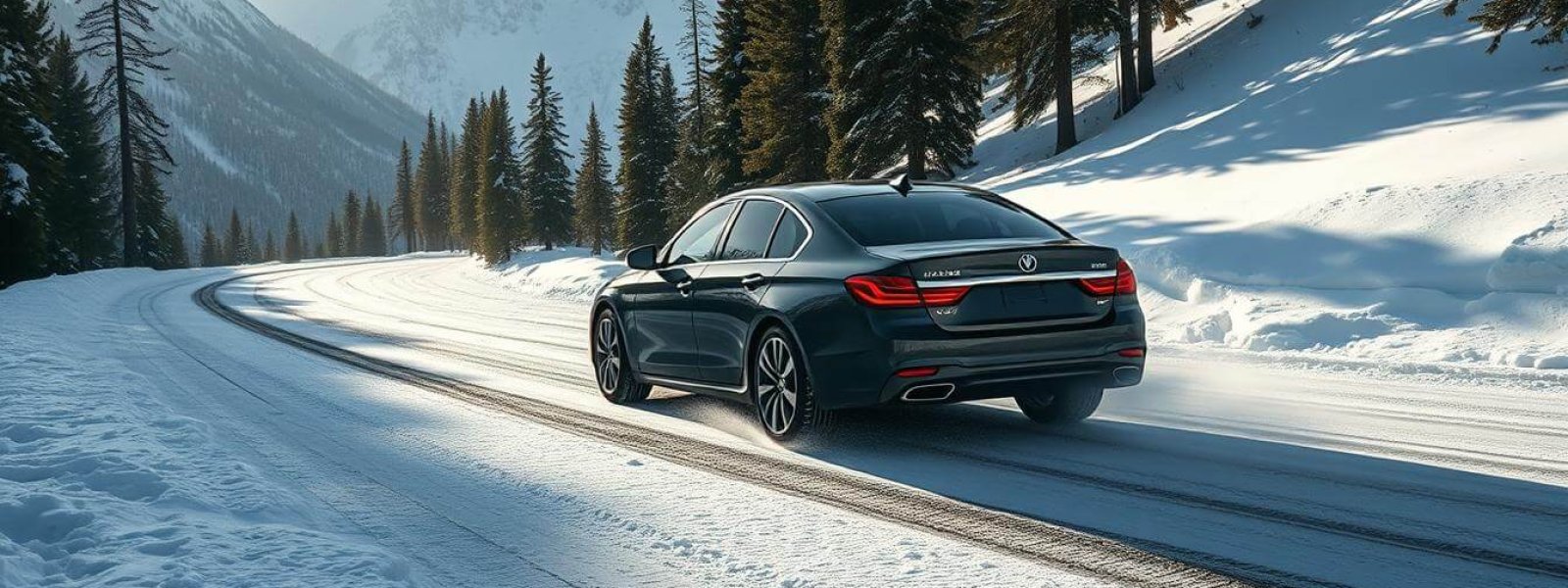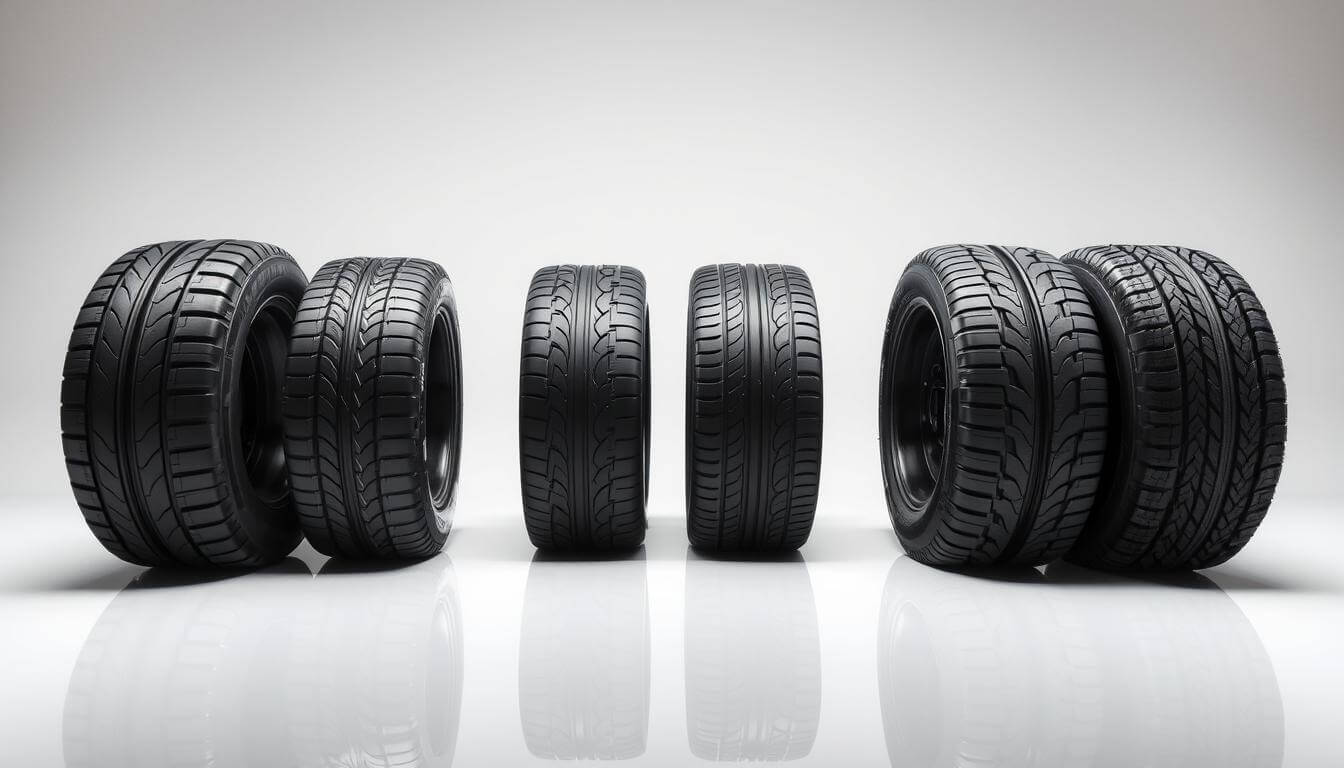Have you ever wondered if your summer tires are the right choice for driving in cold weather? The truth is, using summer tires in winter can be a risky decision that puts your safety at risk. Designed to perform best in warm conditions, summer tires offer great efficiency and low noise levels. However, as temperatures drop, their performance drastically changes.
When the mercury falls below 7°C (45°F), the rubber compound in summer tires stiffens. This means they lose traction on icy or snowy roads, making it harder to control your vehicle. Imagine driving on a slippery road, where your car doesn’t respond as quickly to your steering. The stopping distance increases by up to 30%, and the grip on the road is reduced by 50%. These are serious safety concerns that no driver should ignore.
Using summer tires in winter also means facing other risks. Longer braking distances and poor grip can lead to dangerous situations on the road. Moreover, the tread on summer tires can become brittle in cold conditions, leading to cracks and damage. This not only shortens the life of your tires but also increases the chance of an emergency while driving.
Key Takeaways
- Summer tires lose up to 50% of their grip in cold weather.
- Stopping distances increase by 30% on icy roads with summer tires.
- Cold temperatures cause the rubber compound to stiffen, reducing traction.
- Using summer tires in winter can lead to longer braking distances and poor grip.
- Damaged tread and reduced tire life are significant risks in winter conditions.
- Winter tires are essential for safe driving in snowy and icy weather.
Understanding Tire Differences for Winter Safety
When it comes to driving in harsh winter conditions, the type of tires you use can make a significant difference in your safety on the road. Summer tires and winter tires are designed with different purposes in mind, and understanding these differences is crucial for making the right choice.
Summer Tire Characteristics
Summer tires are built for warm weather and dry roads. They feature a harder rubber compound that provides better fuel efficiency and reduces noise levels. However, this hardness becomes a disadvantage in cold temperatures, as the rubber loses flexibility and grip on icy or snowy surfaces.
The tread design of summer tires is optimized for traction on warm, dry pavement but lacks the deep grooves and sipes needed for winter conditions. This means they struggle to maintain contact with the road when temperatures drop below freezing.
Winter Tire Benefits
Winter tires, on the other hand, are specifically designed to handle the challenges of cold weather. They use a softer rubber compound that stays flexible even in freezing temperatures, ensuring better traction on snow and ice.
The tread on winter tires is deeper and features small slits called sipes, which create more biting edges for improved grip. This design significantly reduces stopping distances and enhances overall control on slippery roads.
In comparison, winter tires outperform summer tires in braking performance and safety during icy conditions. While summer tires may offer advantages in warm weather, they fall short when it comes to providing the necessary grip and control in winter.
Summer Tires in Winter: Pros and Cons Analysis
When considering whether to use summer tires in cold weather, it’s essential to weigh their advantages and disadvantages. While they excel in certain conditions, their performance in winter can be problematic.
Advantages in Warm Conditions
Summer tires are designed to shine in warm weather. They offer improved handling on dry roads and lower noise levels for a quieter ride. Additionally, they provide efficient fuel consumption, making them a great choice for everyday driving in temperate climates.
Disadvantages in Cold Weather
In cold weather, summer tires lose their grip. The rubber stiffens, reducing traction on icy or snowy surfaces. This leads to longer stopping distances and less control, which can be dangerous. The tread becomes brittle, increasing the risk of cracks and damage, thus shortening the tire’s lifespan.
Safety Risks and Performance Issues
The safety risks of using summer tires in winter are significant. Without the necessary grip, the chances of losing control increase. Real-world incidents have shown that summer tires can fail in snowy conditions, leading to accidents. For instance, drivers have reported skidding on ice, highlighting the dangers of using the wrong tires in harsh winter conditions.
As one driver shared, “I once drove with summer tires in light snow and nearly lost control on a slight incline. It was a wake-up call to switch to winter tires.”
While summer tires perform well in their intended conditions, they fall short in winter. The risks to safety and performance make them unsuitable for cold weather driving.
Temperature Impact and Rubber Compound Considerations
Temperature plays a crucial role in how your tires perform. When the weather turns cold, the rubber in your tires can behave like Formica—stiff and rigid. This change in pliability directly affects traction, especially on icy or snowy surfaces.
Cold Weather Effects on Traction
- The rubber in summer tires stiffens as temperatures drop, reducing elasticity and grip.
- Below 7°C (45°F), summer tires lose up to 50% of their traction on icy roads.
- This leads to longer stopping distances, increasing by up to 30% on slippery surfaces.
Behavior of Rubber Compounds
Summer tires are designed with a rubber compound optimized for warm conditions. In cold weather, this compound loses its flexibility, causing the tire to struggle on snow and ice. The science behind this is the glass transition temperature—the point where the rubber’s properties change, making it less effective.
For example, imagine driving on a snowy road where your tires can’t maintain contact. This loss of grip is due to the rubber compound’s inability to flex in cold temperatures. Winter tires, however, are designed with softer compounds that remain flexible, ensuring better traction and safety.
🚗 Stay Safe This Winter – Get the Right Tires Delivered & Installed!
Now that you know the risks of using summer tires in winter, it’s time to make the smart and safe choice. Amazon offers a wide selection of top-rated winter and all-season tires, ensuring better grip, braking, and control in icy conditions.
✅ Plus, Amazon makes it easy to get your tires professionally installed near you—so you don’t have to worry about mounting them yourself!
🔗 Shop Winter & All-Season Tires + Installation on Amazon
Real-World Driving Experiences & Tire Performance
Driving in harsh winter conditions can be challenging, especially if your vehicle isn’t equipped with the right tires. Many drivers have shared their experiences about using summer tires in snowy and icy conditions, highlighting the risks and dangers they faced.
Case Studies and User Anecdotes
One driver shared a harrowing experience with their Dodge Charger equipped with high-performance summer tires. While driving on a snowy road, the car struggled to maintain traction, leading to a loss of control on an incline. The driver managed to avoid an accident but noted how the summer tires failed to provide the necessary grip.
- A driver in Colorado reported getting stuck in a snowbank after their summer tires couldn’t gain enough traction to accelerate on a snowy road.
- In Michigan, a motorist experienced a skid on black ice while using summer tires, emphasizing the lack of control and increased stopping distance.
- A New York driver shared how their summer tires performed poorly in freezing temperatures, leading to a longer braking distance and reduced safety on icy roads.
These real-world experiences underscore the importance of using the right tires for the season. Summer tires, while excellent in warm weather, fall short in winter conditions, posing significant safety risks. Switching to winter tires can significantly improve traction, reduce stopping distances, and enhance overall control on snowy and icy roads.
Practical Tips for Your Seasonal Tire Choices
Choosing the right tires for each season is crucial for safety and performance. With so many options available, it can be confusing to decide which tires are best for your needs. Let’s break it down into simple, actionable tips to help you make the right choice.
Comparing Winter, Summer, and All-Season Options
Winter tires are designed for snowy and icy conditions, offering better grip and control. Summer tires provide excellent performance in warm weather but lose traction in cold temperatures. All-season tires are a middle ground, suitable for mild winters but less effective in extreme snow or ice.
| Tire Type | Pros | Cons |
|---|---|---|
| Winter Tires | Better grip on snow and ice, shorter stopping distances | Less efficient in warm weather, softer rubber may wear faster |
| Summer Tires | Superior handling on dry roads, lower noise levels | Poor performance below 45°F, brittle tread in cold |
| All-Season Tires | Versatile for mild conditions, cost-effective | Less effective in extreme cold or heavy snow |
When and Why to Switch Tires
Switch to winter tires when temperatures consistently drop below 45°F. Summer tires are ideal for warm months, while all-season tires work well in areas with mild winters. Consider local weather patterns and your driving habits when deciding.
Consult with a tire expert to get personalized advice for your vehicle and climate. Planning ahead ensures your safety on the road all year round.
❄️ Don’t Risk Your Safety – Switch to Winter Tires Today!
Driving with summer tires in freezing temperatures is dangerous, leading to reduced traction and longer braking distances. The best way to stay safe on icy and snowy roads is by using the right set of winter or all-season tires.
🔥 Amazon makes it simple—order top-rated winter tires from trusted brands and get them professionally installed in your area for a hassle-free experience!
🚀 Don’t wait—prepare for winter driving today!
🔗 Find the Best Winter & All-Season Tires + Get Them Installed on Amazon
Conclusion
As the seasons change, so should your tires. Using summer tires in cold weather can significantly compromise your safety on the road. The rubber in summer tires stiffens in low temperatures, reducing traction and increasing stopping distances by up to 30%. This can lead to dangerous situations, especially on icy or snowy roads.
Winter tires are specifically designed to stay flexible in freezing conditions, providing better grip and control. They feature deeper treads and small slits called sipes, which enhance traction on snow and ice. All-season tires are a good middle ground for mild winters but may not perform as well in extreme conditions.
Real-world experiences highlight the risks of using summer tires in winter. Drivers have reported losing control, skidding, and even getting stuck in snowbanks. These incidents emphasize the importance of choosing the right tires for the season.
Switching to winter tires when temperatures drop below 45°F can make a significant difference in your safety. Consider your local weather patterns and driving habits when deciding between winter or all-season tires. Your safety on the road depends on it—make the smart choice and equip your vehicle with tires designed for the season.
☀️ Want to know everything about summer tires? From choosing the best summer tires to understanding how they perform in warm conditions, check out our comprehensive summer tire guide to make the best choice for your vehicle:
🔗 Everything You Need to Know About Summer Tires: A Powerful & Reliable Summer Tires Guide in 2025
FAQ
1. What’s the difference between summer and winter tires?
Summer tires in winter conditions are not a good choice because they lose traction when the temperature is freezing. They are tailored for performance on dry and wet roads, with lower rolling resistance for better efficiency and handling while also reducing noise levels. On the other hand, winter tires have deep tread and soft rubber compounds to maintain grip in extreme winter conditions.
2. Why shouldn’t I use summer tires in the winter?
Using summer tires in the winter is bad for safety. As seasons are changing, winter is the time when local weather conditions affect traction. Summer tires must be replaced because they harden in cold weather conditions, leading to shorter braking times on dry and wet surfaces but poor grip on snow and ice.
3. Can I use all-season tires instead of switching between summer and winter tires?
All-season tires could be an alternative in mild winter conditions, but they do not match winter tires in extreme winter conditions. Although all-season tires provide some winter grip, they pose a risk in heavy snow and ice. For better safety, consider winter or at least all-season tires depending on your driving conditions.
4. How do I know when to switch to winter tires?
A huge deciding factor is the temperature. When it drops below 45°F (7°C), it’s time to fit winter tires or at least all-season tires. Getting cold weather affects driving conditions, making winter tires the right tire choice for safety.
5. What happens if I drive on summer tires in snowy conditions?
Driving with summer tires in winter conditions poses a risk to safety. The tire loses traction, struggles to chip through ice, and may lead to accidents. If you experience bad winter weather, changing the tires is essential to help you navigate the roads safely.
6. Are winter tires really necessary, or can I use all-weather tires?
All-weather tires are designed for year-round use and can handle mild winter conditions. However, in extreme winter conditions, winter tires perform significantly better. Continental tires, for example, offer good braking performance on dry roads while maintaining grip in winter weather.
7. How does cold weather affect summer tire performance?
When the temperature is freezing, summer tires in the winter harden, resulting in lower rolling resistance but poor traction. This affects driving conditions, reducing safety. Performance tires optimized for warm weather are not built for throughout-the-year use in cold climates.
8. What should I do if I get stuck in the snow with summer tires?
If you’re caught in winter weather with summer tires, try the following:
✅ Avoid spinning your wheels, as this risks damaging the rubber.
✅ Use sand, salt, or kitty litter for extra traction.
✅ Consider calling roadside assistance if the snow is too deep.
✅ For future safety, switch to winter or at least all-season tires.
9. How do I store my summer tires properly during the winter?
To maintain longevity, follow these steps:
✅ Clean and dry your tires before storing.
✅ Keep them in a cool, dark place, away from heat sources.
✅ Use tire bags to prevent damage to the tread compound.
✅ Check for wear before reinstalling them in the warmer months.
10. Do I really need to switch my tires twice a year?
Yes, changing the tires with the seasons is essential for safety. Tire industry experts recommend against using summer tires in winter because it affects driving conditions and poses a risk. Switching to winter tires in the cold months ensures good braking performance on dry and wet surfaces while keeping you safe.



